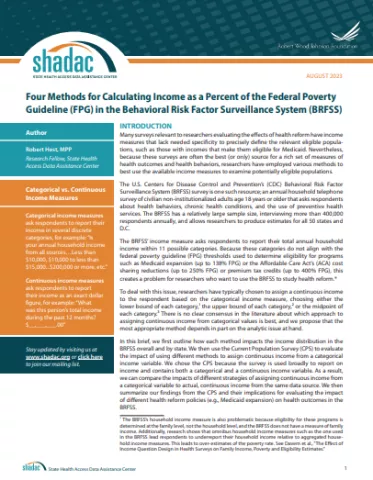This updated SHADAC brief delves into four common methods for calculating income as a percent of the Federal Poverty Guidelines (FPG) using 2021 estimates from the U.S. Centers for Disease Control and Prevention's Behavioral Risk Factor Surveillance System (BRFSS).
The BRFSS survey collects valuable health-related information from adults, but its income categories don't precisely align with FPG thresholds, which are pivotal in determining eligibility for programs like Medicaid expansion or Affordable Care Act subsidies. To bridge this gap, researchers have utilized various methods to translate categorical income data into more accurate continuous values. The brief discusses how four methods—lower bound, upper bound, midpoint, and uniform distribution—impact income distribution overall and by state, and use 2022 Current Population Survey (CPS) data to compare these methods against actual continuous income data.
The appendix supplies code snippets that showcase the technical process of assigning continuous income using the different techniques, and explains how household size and state of residence influence FPG calculations.
The previous version of this brief published May 2019 can be accessed here.

